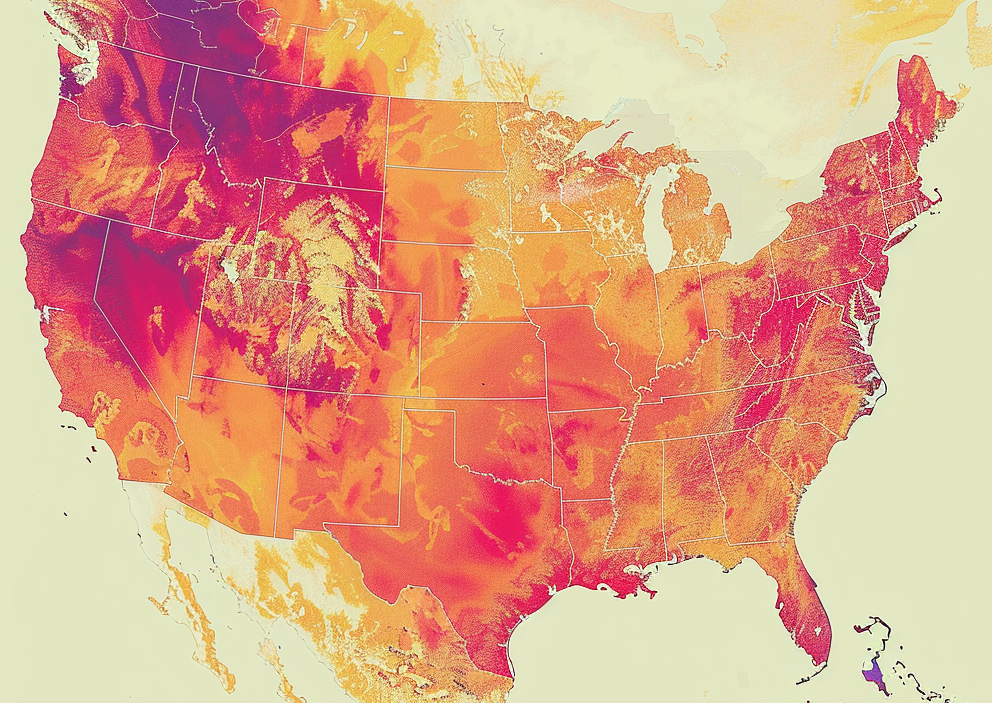
In a dramatic and alarming trend, the United States has seen a slew of high-temperature records broken over the past week, underscoring the intensifying impacts of climate change. According to recent data, over 110 temperature records were either broken or tied across 21 states. This unprecedented heatwave has particularly affected regions like South Florida, where Miami experienced a record high of 96 degrees Fahrenheit last Wednesday and a heat index that hit a staggering 112 degrees Fahrenheit over the weekend, breaking previous records by a significant margin.
The extreme heat has not only set new daily highs but has also contributed to a broader pattern of record-breaking temperatures throughout the summer. For instance, Galveston, Texas, hit a daily record, and numerous other cities across the southern and western U.S. have reported similar trends. This pattern is consistent with forecasts from the National Oceanic and Atmospheric Administration (NOAA), predicting a hotter-than-normal summer for the entire continental U.S. through August.
This spate of high temperatures can be attributed to several factors, including a persistent high-pressure dome over the region, reduced ocean mixing due to weaker trade winds, and broader climatic changes driven by global warming. The Atlantic Ocean’s temperatures have also been unusually high, contributing to a feedback loop that exacerbates heatwaves on land.
These rising temperatures pose significant risks, not only for human health but also for infrastructure and ecosystems. The increased demand for electricity to power air conditioning systems has put a strain on power grids, while the heat has also stressed water supplies and agricultural systems. Moreover, the long-term environmental impacts, such as coral bleaching and accelerated ice melt, continue to highlight the urgent need for action to mitigate climate change.
The situation in South Florida and other affected areas serves as a stark reminder of the growing frequency and intensity of extreme weather events. As global temperatures continue to rise, breaking such records may become increasingly common, necessitating robust adaptation and mitigation strategies to protect communities and ecosystems.
Human beings have a remarkable ability to adapt to a wide range of temperatures, but there are limits to what the body can endure. The human body maintains an optimal internal temperature around 98.6 degrees Fahrenheit. When external temperatures rise significantly, the body relies on mechanisms like sweating to cool down. However, these mechanisms can become overwhelmed in extreme heat.
The highest temperature at which a human can survive is subject to various factors, including humidity. In dry conditions, humans can endure temperatures up to 140 degrees Fahrenheit (60 degrees Celsius) for short periods. However, in high humidity, the body’s ability to cool itself through sweating is compromised. This can lead to heat-related illnesses such as heat exhaustion and heatstroke, which can be fatal if not treated promptly. Stay hydrated and in air conditioned spaces when the temperature starts to climb.






